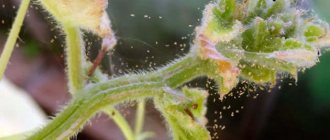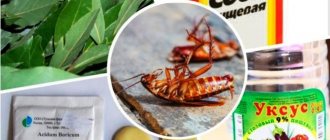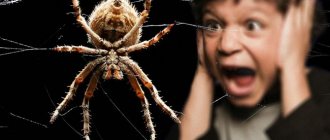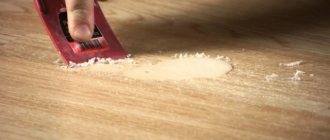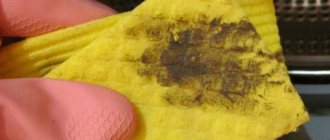Genital fleas are all types of fleas, except pubic fleas, which appear in a person’s home. These are cat fleas, dog fleas, rodent fleas, and also human fleas. As a rule, they can be found in places that are located closer to the floor. These are areas of baseboards, carpeting, behind furniture, etc., which is why they received such a collective name. In this regard, they have nothing to do with pubic lice.
Genital fleas are parasites that feed on the blood of their prey. At the same time, they are not constantly on their prey, but climb onto it to feed. All types of parasites pose a serious danger to humans, as well as to pets. In this regard, timely fight against them is the key to health.
What types of fleas are classified as sexual
In everyday life, genital fleas refer to all types of these parasites that settle in human homes. Insects prefer to settle behind baseboards, in carpets, and in corners behind furniture. In a word, in places located closer to the floor, hence their collective name. The most common types of fleas are:
- feline;
- rat;
- canine;
- human.
Each species is adapted to the body temperature, hair and blood characteristics of the main host. However, if it is absent, the parasite is able to feed on the blood of any other warm-blooded animal or person.
Human flea
The most preferred food for this type of exoparasite is human blood. Insects do not live permanently on the human body, but are on it only at the moment of blood sucking, plunging deeply into the skin. It is impossible to distinguish a human flea from other types of fleas with the naked eye. In the absence of a primary host, this type of parasite easily switches to feeding on cat or dog blood.
Human fleas: what they look like and how to rid a person of fleas is written in more detail in this article.
cat flea
These are universal parasites that feed on the blood of almost all warm-blooded animals. Cat fleas are small, dark brown insects with a characteristic shine, with powerful, kicking hind legs that provide the insect's jumping ability. Adults feed on blood. The larvae developing on the body of animals feed on plant debris and blood in the feces of the imago. Insect pupae are resistant to changes in the external environment. Under unfavorable conditions, the development of the insect slows down. When external conditions become favorable, adults appear.
Rat flea
Attention! The most dangerous type of bloodsucker is one that parasitizes rats. They easily adapt to all living conditions. These insects often change hosts, which leads to parasite infection.
The main host is the gray rat, which lives in sewer pipes and cesspools, so this type of flea is the most common and dangerous, as a possible carrier of terrible infections.
Parasites feed not only on the blood of rats. People and pets can become victims of parasites. The bite of this type of bloodsucker is painful.
The listed insects, outside their host, tend to settle in human housing. They often settle in carpets, rugs, bed linen, and wardrobes.
Chemical treatment
Professional cleaning of premises from parasites is carried out using several methods using chemicals toxic to insects.
The most effective methods of disinfestation:
- hot fog;
- cold fog;
- fine spraying.
Fogging involves spraying a substance that is poisonous to insects with a generator. Hot and cold fog differ in the temperature of the solution. It is better to use cold fog in an apartment, as this method damages the furniture less.
Hot fog can be used in basements. Fine-droplet spraying is carried out using a special sprayer.
Furniture and walls in the house are treated to a height of 1.5 m, paying attention to every nook and corner of the room. Wash with anti-flea solutions or spray with aerosols carpets, dog or cat bedding, areas under radiators and behind the refrigerator.
After treatment, the room must remain closed for at least 2 hours. It is better to leave home for 1-2 days. After returning, you need to ventilate the apartment, then wash the treated surfaces with soapy water. Only after this can children, adults and pets return to the house.
To completely exterminate insects, it is necessary to repeat the treatment after 10 and 20 days.
Anti-flea solutions for cleaning floors
Wet cleaning helps fight harmful insects. It is carried out using purchased or independently prepared solutions. Mixtures help reduce the activity of arthropods (but not kill them), get rid of larvae, eggs on the floor and furniture surfaces.
You can add to the water for wet cleaning:
Wet cleaning in the apartment can be done by adding flea shampoo to the water.
- pet shampoo for parasites;
- insect growth inhibitors;
- Diatomite powder;
- preparations for removing fleas from livestock.
If there are few fleas in the room, then instead of drugs you can use laundry soap. It is grated and added to a bucket of water, then the contents are mixed well until everything is completely dissolved.
After washing the floor with a solution of laundry soap, after complete drying, you need to treat the surface with clean water. You can use baking soda instead of soap solution. 4-5 spoons are enough per bucket.
Application of aerosols
It is convenient to spray insecticides from aerosol cans. The procedure is carried out twice with an interval of 7 days, since aerosols destroy adults and larvae, but do not affect eggs.
Aerosols are considered the most effective:
- “Dichlorvos” - a 190 ml aerosol is used over an area of 20 m²;
- “Raptor” – a 350 ml can is enough to treat 60 m²;
- “Raid” – 350 ml of product is enough to kill insects on 35-45 m².
When using pest control products, precautions must be taken. When choosing an aerosol, it is important to consider the area of the house, including all living rooms and utility rooms. Sometimes several cans may be required.
Insecticidal agents used to kill genital fleas.
general description
Fleas belong to the order of wingless blood-sucking insects. They adapt well to changing weather conditions, temperature fluctuations, and some species even tolerate radiation well. These insects, especially their larvae, react worse to changes in air humidity and do not tolerate dry air well.
Appearance
The flea's body is elongated and laterally flattened. The insect has three pairs of limbs, which are quite long and well developed. Fleas move by jumping. The color of these arthropods ranges from pale yellow to black, the body is covered with bristles, and on the abdomen there is a special organ that responds to vibrations.
The oral apparatus is of a piercing-sucking type, consisting of hard plates (stylets), with which the insect pierces the skin. The blood sucking process lasts from a minute to several hours.
Life cycle and reproduction
Fleas are bisexual insects. Females have a spermatheca on the back of their body, while males have a genital claw. The mating process lasts several hours.
The female lays eggs immediately after fertilization. In conditions favorable for the parasite, laying occurs daily. If the female is hungry or weakened, she cannot lay a clutch.
The metamorphosis cycle of fleas is complete. Fertilized females do not lay eggs, but scatter eggs in all directions. The eggs take two weeks to mature.
A larva emerges from the egg and can actively move. The larva feeds on organic, easily digestible remains. After several molts, pupation occurs. The adult that emerges from the cocoon immediately begins searching for warm-blooded animals to get enough blood.
Habitat
Fleas are widespread. They live on all continents of the planet. Adapt to any climatic conditions. Most species of these insects live in temperate and subtropical climates. They often settle in the nests and burrows of mammals and birds.
What animals do they parasitize?
Fleas are specialized insects that feed in the imaginal phase only on the blood of warm-blooded vertebrates. Moreover, individuals of both sexes are blood-sucking.
Insect species differ significantly from each other in the nature of parasitism. Some may be burrowing bloodsuckers that periodically attack warm-blooded animals, while others may be exoparasites that constantly live on the host.
Insects of this order parasitize all warm-blooded animals. For humans, from an epidemiological point of view, the most important species are those that live in human homes and parasitize humans, cats, dogs, as well as synanthropes: rats, house mice.
Why are insects dangerous?
When a flea gets on the body of its victim, for example, a dog, it remains in the fur because it needs constant nutrition. This insect easily switches to other victims that are nearby, for example, a cat or even a person. The danger is that these parasites are carriers of dangerous diseases.
Parasites can cause the disease pulicosis, sarcopsillosis, and they can also infect with nematodes, which are parasitic worms. The list of diseases that these small insects spread includes encephalitis, cholera, brucellosis, hepatitis, plague and many other dangerous diseases.
After the bite, the victim begins to experience severe itching. The victim may not feel the bite itself if it is done by an adult. Because when a flea bites, it secretes a special anesthetic enzyme, but young fleas do not have it, so the bite is accompanied by pain.
Another danger is that the wounds after a bite are scratched, and this leads to additional infection. This causes inflammation and the appearance of ulcers. If treatment is not carried out, pyoderma develops, which is quite dangerous with complications. Pets suffer from dermatitis, which requires mandatory treatment.
How do fleas get into living spaces: what are the signs of their presence?
The most common cause of flea infestation is pets. But parasites also appear in rooms where there are no pets. Parasites often move:
- from infected apartments in the neighborhood;
- from basements and attics;
- from empty premises infested with rats.
Cities are a favorite habitat for many species of blood-sucking fleas, and the main hosts of fleas are not stray dogs and cats, but rodents, the number of which is much larger.
Important! The first signs indicating the appearance of blood-sucking insects in the house:
- restless behavior of pets (animals are constantly itching, sleep and eat less);
- itchy inflammatory elements appear on people’s skin;
- jumping small dots appeared on the floor or flooring.
Attention! If such signs appear in the apartment, it is necessary to inspect the animals and the entire house for the presence of fleas.
Signs of infection
To make sure that there are fleas in your home, you can lay out sheets of clean paper on the floor. On a white surface, insects will be clearly visible.
A sign of the spread of ectoparasites is the restless behavior of animals, their constant desire to scratch their ears, neck, and groin. These parts of the body are less hairy and are favorite places for fleas to attack.
A person's legs suffer. Many bite marks appear on them, which look like small red spots. The affected areas are characterized by unbearable itching.
How to deal with carpet fleas
Carpet fleas are the general name for all types of these blood-sucking insects that settle in human homes.
Removal of blood-sucking parasites is carried out in stages:
- getting rid of pet insects;
- disinfestation of the premises;
- cleaning the premises after disinfestation;
- preventive measures to prevent re-invasion of fleas.
15 most effective ways to get rid of fleas in an apartment using folk remedies
Preparations for the destruction of blood-sucking insects
Adults feed only on blood, so the insect cannot be poisoned through the digestive system. To combat fleas the following are used:
- sprays;
- powders and suspensions;
- crayons.
In these forms, toxic substances act through the respiratory system and by contact, penetrating through the chitinous cover of the insect. All effective drugs act on the insect’s nervous system, causing disruption of nerve impulses and paralysis. Insecticides of the pyrethroid group and organophosphorus compounds are mainly used.
How to remove exoparasites from pets
Important! Fleas often parasitize cats and dogs, causing a lot of trouble for their owners. Insect bites cause itching in animals, which can lead to various types of dermatitis.
By shaking fleas from their skin, mammals unwittingly contribute to the spread of parasites. Fleas can infest carpeting and upholstered furniture, and settle in crevices near baseboards. A massive accumulation of fleas can cause pets:
- anemia;
- exhaustion;
- the appearance of areas of alopecia.
Attention! Fleas are dangerous for small puppies and kittens, a massive accumulation of which can lead to the death of the animal. Parasites also cause significant harm to people who come into close contact with pets.
Therefore, if you find insects in an animal's fur, you must act quickly. Veterinary pharmacies offer a large selection of insecticides for flea baiting:
- Sprays are used when there is a large concentration of parasites. These are fast-acting drugs. The most popular sprays are Bars, Celandine, Hartz. But they are toxic, which can cause poisoning to your pet.
- Collars with repellents are used only as a preventive measure, but are ineffective in killing insects. In addition, cats do not tolerate collars well.
- Shampoos are gentle, but not always effective; shampoos are good for small kittens. The most popular are: Phytoelite, Rolf Club, Celandine.
- In case of severe parasite infestation, injectable drugs are used: Ivermectin, Lufenuron, which protect the animal for a long time, but they have contraindications. Injections are recommended only in the presence of a veterinarian.
- To destroy parasites, there are also tablet preparations: Lufenuron, Comfortis. They are effective and are used in cases where the animal has scratching and the use of external agents is difficult. However, getting an animal to swallow a pill is difficult.
- Drops applied to the animal's withers are often used to disinfest pets. These are products such as Bars, Celandine, Advocate. They are effective and their use does not require effort.
Important! Folk remedies are used as prophylactic agents or after chemical treatment of animals. For example, they make a decoction of herbs with a repellent effect (geranium, lavender, tansy) and treat the animal’s fur.
Disinsection of residential premises
When fleas appear in residential premises, it is important to understand how dangerous this “neighborhood” is.
There are different ways to get rid of carpet fleas at home. Which method to choose depends on the degree of contamination of the room. If the room is slightly infested:
- Conscientious cleaning will help remove genital fleas. It is necessary to move the furniture and wash with soap the places where insects may accumulate. For this purpose, washing powder and special liquids are suitable for washing floors and cleaning carpets.
- Parasites can be expelled from carpets and any carpeting by using the repellent properties of essential oils - chamomile, mint, rosemary, citrus fruits. To do this, the carpet is washed and thoroughly vacuumed, and then tampons soaked in essential oils are laid out on its surface, and the same tampons are laid out on upholstered furniture.
- A cheap and simple method gives good results: soda and salt are mixed in equal proportions. The mixture is applied to carpets, along the floor, along baseboards, and after 24 hours it is removed.
If the infestation is severe, it is hardly possible to do without insecticides. The most popular of them:
- Raptor in the form of a spray. The product retains its effect for a long time and has a pleasant mint smell.
- Raid. A popular product, it comes in the form of a spray, which allows you to quickly treat a large area.
- Clean house. The drug is available in the form of a spray and is effective against blood-sucking insects.
- Butox. A potent drug. To get rid of parasites, a single treatment is enough.
- Varan. The product is odorless, effective against blood-sucking insects, and prevents their appearance for two weeks.
When you need specialist help
Attention! It is not always possible to cope with blood-sucking insects using your own means. The decision to poison fleas yourself can be a mistake and will result in people getting hurt.
Contacting a pest control service is necessary if:
- numerous attempts at self-disinfestation were unsuccessful;
- In addition to fleas, the facility also contains cockroaches, rats, and bedbugs;
- The area of the object is large and abundantly populated by parasites.
By turning to exterminators, you can save a lot of time, effort, and most importantly, nerves.
Safety precautions during disinfestation
When disinfesting a residential premises, the following precautions should be observed:
- use self-defense equipment (gloves, goggles, mask);
- after treating the house with aerosol preparations, leave it for several hours, then thoroughly ventilate the room and carry out a thorough cleaning, washing the floors and walls;
- When using a powdered drug, do not forget that children or animals can get it. Therefore, you should scatter it in inaccessible places or block their access to the surface to be treated.
Preventing the reappearance of fleas in the house
Attention! To protect your home from carpet parasites, you must:
- Constantly monitor the health of your pets, periodically bathe them with anti-flea shampoo;
- for preventive purposes, you can periodically wash the floors with a wormwood solution;
- keep the house clean, ventilate, and carry out wet cleaning;
- avoid excessive humidity;
- monitor the condition of basements and attics. If rats are spotted, call an exterminator immediately.
Flea spray in the apartment: a review of effective remedies, read more in this article.
Useful tips
You should always remember that a positive result can only be obtained with an integrated approach. For example:
- You should purchase only those toxic substances that are intended to combat fleas.
- You should not go into your home wearing shoes and clothes that family members wear when visiting the street or basement.
- Bedding for pets must undergo heat treatment with chemicals.
- If fleas appear in the basement, special services should be notified. If there is no response from the services, then you will have to insist, informing the authorities.
- Carry out regular cleaning of the premises using herbal infusions of wormwood, tansy, eucalyptus and other plants with a bright, lasting aroma. This method will repel various insects.





